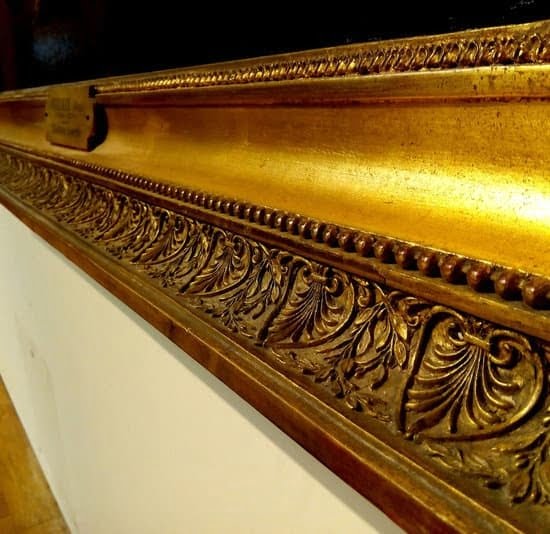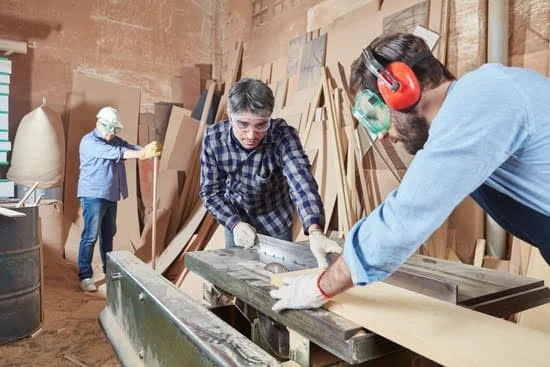Introducing the Basics
Double sided tape is a type of adhesive tape with pressure-sensitive glue on both sides. It is most often used as a way to adhere two surfaces together without having to actually use an exposed fastener. Woodworkers, in particular, often turn to double sided tape for certain tasks, such as gluing wood segments together or affixing metal trim where using traditional nails or screws would be too difficult. Other common applications include gluing edge banding onto projects and creating more precise and reliable jigs. Double sided tapes generally have strong adhesion power and can hold up against heavy materials like wood, metal, and stone with ease. They are also incredibly versatile, allowing woodworkers to hold objects at specific angles without sagging or slippage between parts.
Analyzing Different Types of Double Sided Tape
When considering which type of double sided tape to use for woodworking projects, there are a few important factors one needs to consider. First, the materials used in the construction of the tape. While traditional craft adhesive tapes come with a plastic backing and an adhesive on each side, advanced adhesives may include synthetic rubber or acrylic resins as part of their formulation, making them more durable while reducing their cost. Second, understanding potential strengths and limitations with using double sided tapes rather than other structures like nails or screws will help with selection. Third would be how one intends to use the double sided tape; if the adhesion is permanent or temporary, indoors or outdoors, and surrounding temperature will factor into which option is better suited.
When selecting material for double sided tapes in woodworking projects, there are many choices to choose from including paper-backed fabric tapes and film carriers with backing adhesives such as polyethylene foam, silicone based foam and polyester mat coated versions. Papers have limited durability and have a tendency to age quickly when exposed to moisture and low temperatures. Foams provide excellent adhesion performance but can be difficult and messy to work with when applying large amounts onto surfaces. Lastly, polyester mats are generally considered best suited for outdoor applications due to its ability to withstand the elements more effectively than other paste types.
In terms of strength under various conditions such as heat, moisture or pressure applied externally in various forms like wind stressors – double sided tapes have shown great success depending upon the type chosen. For example, paper-backed fabric tapes are known for having great strength against both tension and shear forces making them perfect for wing panel bonding operations in aircrafts However when it comes to temperature resistances especially high temperatures – polyester mat variants tend to offer greater stability against thermal cycling while masking varieties perform better against chemical resistances like oil.
When it comes down to determining what is best for any given application – understanding differences between all tape materials offered (i.e., paper-backed fabrics tapes versus film carrier types) plus being conscience of temperature limitations where appropriate can go a long way towards achieving desired results from desired product purchased while avoiding future costly repairs due improper structural integrity selected at onset project initiation stage of conductivity
Benefits of Double Sided Tape in Woodworking
Double sided tape is an incredibly versatile and effective adhesive used for woodworking projects. The tape features adhesive on both sides, allowing it to bond different materials together firmly and securely. The convenience and ease of use make this an ideal option for projects big and small alike.
The most apparent benefit of double sided tape is that it is so easy to apply. It can be cut with scissors or a knife, meaning there are no bulky applicators needed like with liquid adhesives. Speaking of which, double sided tape eliminates the mess associated with other glue-like products. You won’t have to worry about any subsequent mess or clean up when using this product – simply apply and move on!
Unlike conventional wood glue or epoxies, double sided tape creates strong yet repositionable bonds that can be removed without damaging the surface the adhesive was applied to. This makes it perfect for a variety of repair jobs, such as those found in antique furniture restoration or cabinet repairs. As an added bonus, double sided tape often costs less than traditional adhesives due to its smaller size and lighter weight in comparision to liquid-based adhesives.
If you’re looking for a convenient, money saving adhesive choice for your next woodworking project then you may want to consider using double sided tape! With its easy application process and ability to create strong yet removable bonds it just might become your go-to adhesive solution!
Selecting the Right Tape for Your Projects
When choosing double sided tape for woodworking, it is important to consider both the strength and durability of the adhesive used. Strength generally refers to how long a single bond will hold before coming apart, while durability is the amount of time the bond can last before losing its “sticking” power. The range of material available in double sided tape ranges from low-quality adhesives that only provide temporary bonds or are best suited for lightweight projects, to high strength industrial grade products with chemical resistance, heat resistance and higher strength adhesives that are suitable for long term use.
Low-grade tape can be quite handy for lightweight projects such as attaching paper or cardstock shapes onto wood surfacing. While these adhesives provided good sticking power, they often start to break down within minutes or hours if exposed to heat or moisture. On the other hand, heavier duty tapes have been designed for woodworking projects that require strong bonds over longer periods of time. For example, some industrial grade tapes come with special features like water-resistance and UV protection making them ideal for outdoor applications where exposure to elements is a concern. These types of tapes typically also offer superior holding power on both metal and wood surfaces due to their thicker construction compared to low-grade types.
Using Double Sided Tape in Woodworking
Double Sided Tape is an essential tool for woodworking projects. With its easy use and secure adhesion, it is undoubtedly one of the most important tools in a woodworker’s arsenal.
The technique used while working with double sided tape varies depending on the specific project. When attaching panels together, ensure that all surfaces to be bound are clean and dry before applying the tape. Start by measuring, marking and cutting a section of tape about the same length as the panel’s edges for a snug fit. Peel off both sides of the backing paper before applying the tape along the edges of both panels. Press down firmly from one side to another to ensure good adhesion.
Caulk can also be used in conjunction with double sided tape to increase sealing strength. To do this, apply a bead of caulk across both top sides of each panel before placing them together with double sided tape applied around its edges. Also, caulk can be used around any screw holes or other fastener points surrounding the seams if needed for added protection against moisture or dust infiltration
Similarly, double sided tape can be used when adding trim or edging to wooden surfaces such as doors and cabinets. This technique is remarkably useful in ensuring precise corner angles as well as creating intricate designs since it allows you to adjust pre-cut pieces without having to worry about glue seepage or resistance during alignment which could otherwise ruin your desired look. Using this method, trace a line along where you would like your trim piece to lay and then apply two tiny strips of double sided tape (one at each end) in order for your piece of trim to temporarily adhere; adjust accordingly with small movements until perfect alignment is achieved; finally secure firmly from one side to another using even pressure all around the trim piece’s perimeter
Cleaning and Maintenance of Double Sided Tape
The use of double sided tape for woodworking is popular among DIYers and professionals alike. It’s easy to apply, strong and versatile when used in different applications. However, the adhesion will weaken when the tape is exposed to temperature extremes or sunlight, so it’s important to be aware of maintenance instructions for double sided tape in order to keep your woodworking project looking great.
For cleaning purposes, water or a mild detergent can be utilized on both sides of double sided tape for woodworking as long as all residue is promptly wiped off afterward. If leftover adhesive remains stuck on the wood surface, an adhesive remover such as lacquer thinner can be used in small amounts and wiped away with a clean cloth lightly dampened with warm water .
Additionally, it is important to periodically replace double sided tape that has been in contact with direct sunlight or extreme temperatures. The best way to know if the bond has weakened is by gently tugging on the edges of the taped area- if the piece easily slides off, then replacing with new tape could be beneficial. Double sided tapes are made out of a variety of materials including foam, rubber and foam silicone which can provide excellent hold; however they cannot withstand prolonged exposure during heat waves or cold snaps without compromising strength.
In Conclusion
Double sided tape, when used correctly, can be an invaluable tool for woodworking projects. It is strong yet easy to use and can provide a safe and secure way of attaching objects in a non-permanent way. It strengthens the bond between the materials being joined by creating an incredibly tight seal that prevents dust, debris and moisture from infiltrating. Furthermore, double sided tapes are often colorless – making them ideal for almost any application, enabling concealed repairs and fixtures without marring finishes or affecting aesthetics. In addition to these benefits, double sided tape also offers the advantage of being easier to remove than other adhesive products – perfect for those times when painting or varnishing unfinished wood projects or reusing parts are needed. In sum, while there are many reasons why choosing double sided tape over other adhesive options is beneficial in woodworking projects, its strength, ease-of-use and versatility are perhaps the most compelling reasons why it should be your preferred choice.

Hi everyone! I’m a woodworker and blogger, and this is my woodworking blog. In my blog, I share tips and tricks for woodworkers of all skill levels, as well as project ideas that you can try yourself.





